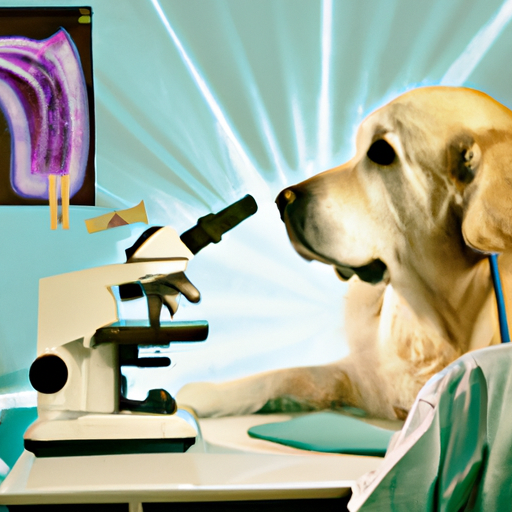Caring for your pet means understanding their health and well-being, including the potential for serious illnesses like cancer. As a caregiver, it’s crucial to be informed about how cancer is diagnosed in dogs, what signs to look for, and what the process might entail.
Understanding Dog Cancer
Your beloved pet is just as susceptible to cancer as humans. Cancer in dogs can manifest in various forms, including skin, bone, and blood cancers, each with unique symptoms and treatment protocols. It’s essential to note that cancer doesn’t discriminate by breed, age, or sex, though certain breeds may be predisposed to specific types of cancer.
Signs and Symptoms of Dog Cancer
Recognizing the signs and symptoms of cancer in your dog is your first step towards a possible diagnosis. It’s important to remember that these symptoms can also be indicative of other, less serious health issues. However, it’s always better to be safe and consult with your vet if you notice the following:
- Lumps, bumps, or swollen lymph nodes
- Unexplained weight loss or loss of appetite
- Persistent sores or wounds that don’t heal
- Difficulty breathing or swallowing
- Ongoing vomiting or diarrhea
Diagnostic Procedures
Once you’ve noticed potential symptoms, the next step is the diagnostic process. This usually involves several stages, including:
Physical Examination
The vet will conduct a thorough physical examination of your dog to check for any visible signs of illness.
Blood Tests
A full blood panel helps the vet to assess your dog’s overall health and rule out other conditions.
Biopsy
If a lump or mass is found, your vet may take a biopsy. This involves taking a small tissue sample and examining it under a microscope for cancer cells.
Imaging
Radiographs, ultrasounds, or MRIs can help to detect internal tumors and determine the extent of the cancer.
Treatment Options
When your dog is diagnosed with cancer, the next step is to discuss treatment options with your vet. The best course of treatment will depend on the type and stage of the cancer, your dog’s overall health, and your own personal preferences. Options may include:
- Surgery
- Chemotherapy
- Radiation therapy
- Immunotherapy
Even with treatment, it’s important to manage your expectations and understand that the goal may not be to cure the cancer, but to improve your dog’s quality of life and alleviate any pain or discomfort.
The Role of Caregivers
As a caregiver, your role is to provide love, comfort, and support for your pet during this challenging time. This includes:
- Administering medication as prescribed
- Ensuring your pet is eating well and staying hydrated
- Keeping your pet comfortable and providing plenty of rest
- Regularly checking in with your vet to report any changes or concerns
Frequently Asked Questions
What are the most common types of cancer in dogs?
- Lymphoma
- Mast cell tumors
- Melanoma
- Osteosarcoma
Can dogs survive cancer?
Survival rates vary depending on the type and stage of the cancer, the dog’s overall health, and the treatment plan. Some dogs can live for many years after a cancer diagnosis.
How can I prevent cancer in my dog?
While you can’t completely prevent cancer, maintaining a healthy lifestyle can help reduce the risk. This includes regular exercise, a balanced diet, regular vet check-ups, and avoiding exposure to known carcinogens.
What is the cost of cancer treatment for dogs?
The cost can vary widely depending on the type of treatment, the severity of the cancer, and your geographical location. It’s best to discuss this with your vet.
As a caregiver, it’s important to stay informed and proactive about your pet’s health. Early detection and treatment can significantly improve your dog’s prognosis and quality of life. Remain vigilant, trust your instincts, and never hesitate to seek veterinary advice when you’re concerned about your pet’s health.



